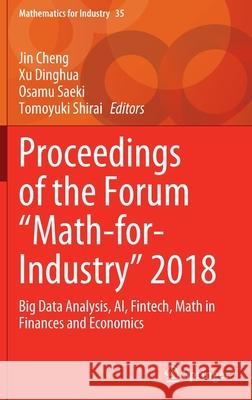Proceedings of the Forum Math-For-Industry 2018: Big Data Analysis, Ai, Fintech, Math in Finances and Economics » książka
topmenu
Proceedings of the Forum Math-For-Industry 2018: Big Data Analysis, Ai, Fintech, Math in Finances and Economics
ISBN-13: 9789811655753 / Angielski / Twarda / 2021 / 196 str.
Proceedings of the Forum Math-For-Industry 2018: Big Data Analysis, Ai, Fintech, Math in Finances and Economics
ISBN-13: 9789811655753 / Angielski / Twarda / 2021 / 196 str.
cena 684,33
(netto: 651,74 VAT: 5%)
Najniższa cena z 30 dni: 655,41
(netto: 651,74 VAT: 5%)
Najniższa cena z 30 dni: 655,41
Termin realizacji zamówienia:
ok. 22 dni roboczych
Dostawa w 2026 r.
ok. 22 dni roboczych
Dostawa w 2026 r.
Darmowa dostawa!
Kategorie:
Kategorie BISAC:
Wydawca:
Springer
Seria wydawnicza:
Język:
Angielski
ISBN-13:
9789811655753
Rok wydania:
2021
Wydanie:
2022
Numer serii:
000480880
Ilość stron:
196
Waga:
0.45 kg
Wymiary:
23.39 x 15.6 x 1.27
Oprawa:
Twarda
Wolumenów:
01
Dodatkowe informacje:
Wydanie ilustrowane











